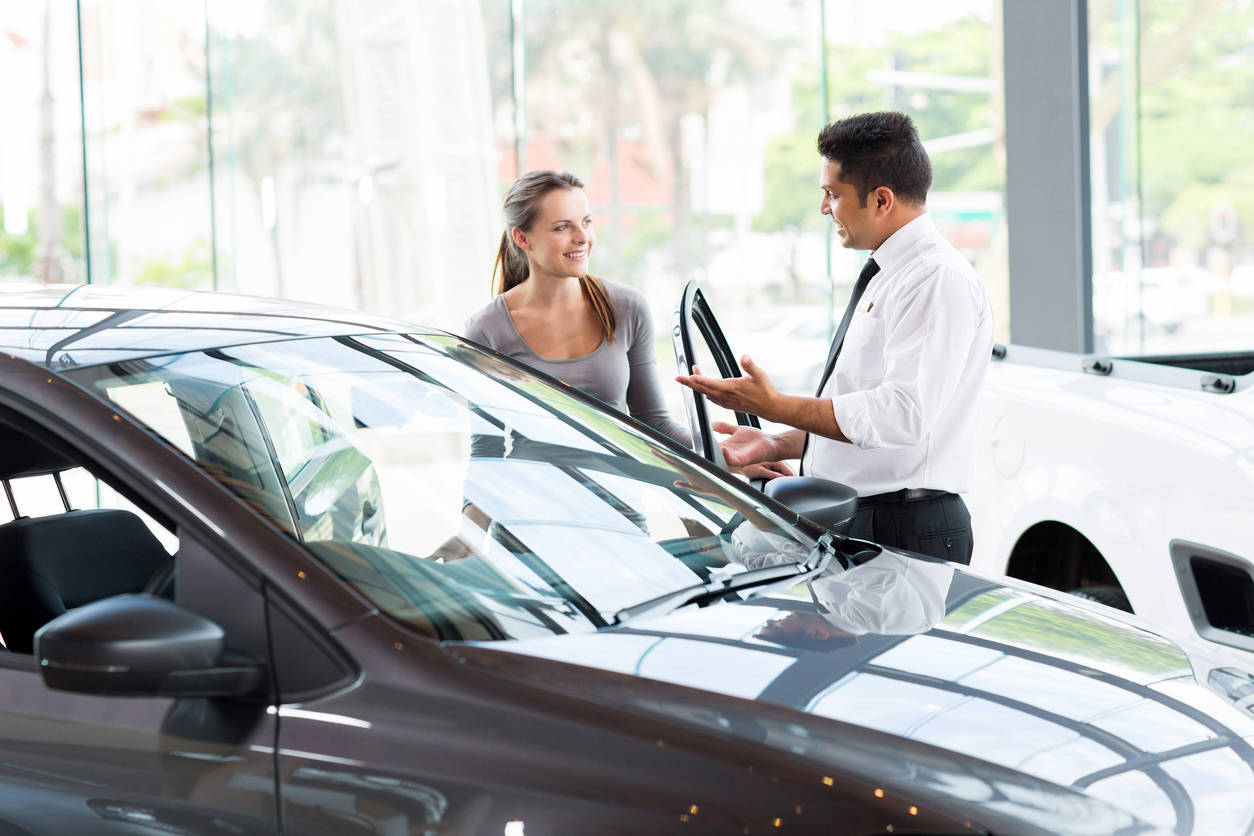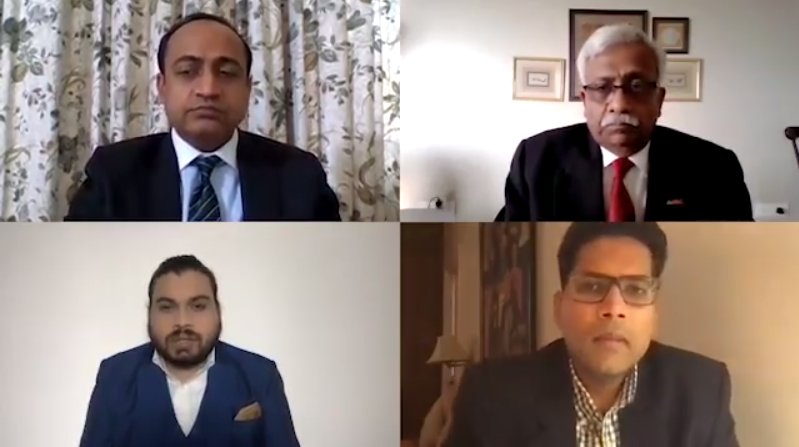 New Delhi: Of late digitalisation has been dominating conversations in almost all walks of life. COVID-19 has accelerated its pace and eventually, every industry, including the automotive which has been largely a brick and mortar industry, adapted to that.
New Delhi: Of late digitalisation has been dominating conversations in almost all walks of life. COVID-19 has accelerated its pace and eventually, every industry, including the automotive which has been largely a brick and mortar industry, adapted to that.Not only the OEMs, but the dealers and customers also have been equally disrupted by this wave of the ‘New Normal’. All the five steps of a customer purchase journey right from inquiry, test drives, closure of deal, delivery, to post-delivery will have some measure of impact. A battery of industry experts at the digital ETAuto Retail Forum deliberated how the journey will be going forward with customers’ evolving nature. What is the future of physical retail, and what will it take to make all the boxes ticked.

People assume that most of the digital activities are coming through big cities, and it is the tech-savvy youngsters who are doing it, but that’s no longer true. It is spreading at a much faster pace and across much wider geographies.
Surprisingly, 55% of a company’s inquiries come from digital and interestingly post COVID-19 more than half of that 55% are coming from Tier-III towns, Rajesh Goel, senior vice president-director, marketing & sales, Honda Cars India, said during the panel discussion.
And what has come to the aid of many of these Tier-II and Tier-III buyers who cannot read and write is the voice search assistant, Nikunj Sanghi, president, ASDC (Automotive Skill Development Council), said.
Sanghi who is also MD and founder of JS 4Wheel Motor Private Limited, and based in Alwar, Rajasthan, outlined that 90% of his customers are rural and agri-based. They won’t even imagine touching a computer for inquiring; mobile has come to their aid.
The pandemic has taught that keeping fat inventories is not the answer. It is neither benefitting the dealer nor the OEM, only making the bankers and financial institutions richer and more profitable than we are.Nikunj Sanghi, President, ASDC
Echoing the same sentiments, Nikhil Bansal, industry head-automotive, Google India, said that the rural consumers, who contributed less than 50% of the online queries, today have surpassed urban users in terms of internet adoption.Further, seven out of ten people by 2025, searching online will be coming from Tier-II, III, IV towns and not from urban cities. According to Google research, queries for the auto industry have grown by 45% despite the slowdown and the lockdown in 2020.
Bansal said it is not just pent-up demand but actually a structural change that is coming. Demand is here to stay, and 2021 is the year of the auto.
So in such a scenario the main task according to Goel for all marketeers, carmakers and dealers is to be able to recognise this change and figure out how the traditional brick-and-mortar model and digital are complementing each other to be able to take care of the customers because ultimately ‘customer is the king’.
Evolving nature of customers
The customer is much better informed than most sales consultants, and the whole purchasing process for customers is more about the experience now, Sanghi said.
The customer is coming to the dealership to validate the information that he/she has got from the internet, and the dealers’ job is to aid the journey in validation.
Queries for the auto industry have grown by 45% despite the slowdown and the lockdown in 2020.Nikhil Bansal, Industry Head – Automotive, Google India
“The people who come to your showroom has already made a choice; so they are coming to the showroom after having made a choice, now it is extremely important that you fortify their choice and tell them they have come to the right place and you have selected the right brand, we are there to give you best of the services and the best of the products”, the ASDC director said. Dealers need to be far more engaged with their customers, and most importantly, they need to be fast, agile and nimble to meet with the customers.
Dealers need to up the ante
Nikhil Bansal of Google highlighted that though it is true that internet adoption has been increasing rapidly and people are transacting online, are people ready to make a big-ticket purchase like a car online?
According to a Google study, almost six out of ten people who are purchasing a two-wheeler or four-wheeler are very comfortable taking the entire process online. But the main task at hand here is to make that process seamless and for that, there needs to be a change in the mindset of dealers as well.
The first and the foremost thing in this journey is enabling the workforce, Sanghi said.
If dealers are going digital, it is important that the workforce is not only aware of what digital is; they also have the right tools, right knowledge and the right mindset to be in the digital world.
The dealers need to realise that the expectation of the customer when he comes online is extremely high. He expects an answer almost immediately and will not want to wait for a second.
“I think it is important for dealerships and its entire team to realise that an inquiry needs to be responded in less than five minutes after it is received. If not, that inquiry will be lost either to the competition or the customer would change his mind. So you’ll have to be live online all the time,” Sanghi said.
Additionally, the dealers need to devise their marketing strategies rather than relying entirely on the OEMs. There is an added responsibility to build websites, Facebook pages and WhatsApp tools to enhance customer engagement.
Small dealer outlet is the way forward
Most of the OEMs have already realised that smaller physical dealer outlets are the way forward in order to stay competitive and relevant. There is no need for ‘Taj Mahal’ size dealerships anymore because most of the customer purchase journey would have already concluded online.
Sanghi pointed out that there is no need for such a huge infrastructure anymore; they will have to become lean.
“The pandemic has taught both the dealers and the OEMs that keeping a stock and fat inventories is not the answer. This is a cost that only building up into the system, benefitting neither the dealer nor the OEM and only making the bankers and financial institutions richer and more profitable than we are,” Sanghi said.
Hence the dealers need to get down to a situation where they have just-in-time inventories and as the inventory level goes down so will the stocking space and the number of people in the showroom.
‘Sell to Demand’ concept is good when you have to conserve cost, but the moment you have a time element to it, the hurdle goes up. It has also got to do with the patience of the customers.Rajesh Goel, Sr VP & Director – Marketing & Sales, Honda Cars
For instance, Honda Cars have a concept of extended outlets, i.e. a much smaller outlet, a spoke/hub of a much bigger outlet where the customers can see the car, experience it, and decide.
Going forward the focus will be more on these extended outlets rather than bigger dealerships in order to become more viable and complement the digital integration, Goel said. In a way, digital is only going to complement the physical dealerships.
Another important highlight of the discussion was ‘To sell to demand’ on which the Honda Cars executive commented, “To sell to demand enables cutting down cost and conserving it. When you are not selling to demand, it means you are keeping inventory. But it has also got to do with the patience of the customers. Sell to demand is good, but the moment you have a time element to it, the hurdle goes up.”
Need to focus on after-sales
After-sales has always been a neglected domain these widely held discussions which need to be brought to the forefront according to the industry experts as dealers derive most of their profitability from after-sales services rather than selling the car.
Bansal said, “For the dealer fraternity, profitability is the key. Selling a car is not as profitable as what you do after that whether it is service, selling parts and accessories, insurance, financing. It is where real profitability for the dealership lies. Those processes are not online.” Rajesh Goel also thinks that after-sales services hold the key.
Meanwhile, Sanghi has a different view and said that digitalisation is happening in the after-sales market too. All OEMs and dealerships are now booking their services online and it needs to be taken deeper with more availability of services online.















